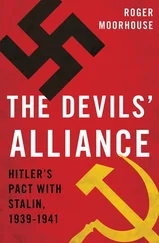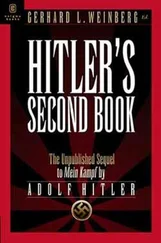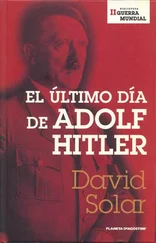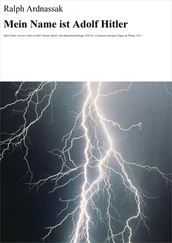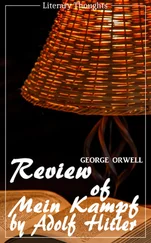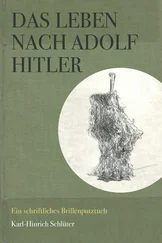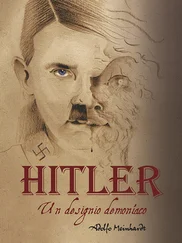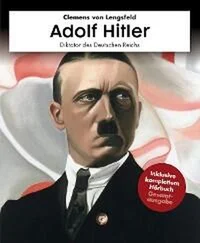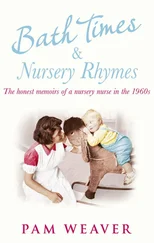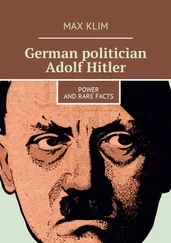Emil Maurice (b. 19.1.1897 Westermoor/Schleswig-Holstein, d. 6.2.1972 Starnberg). 1919 Nazi Party member No. 594 (Hitler was No. 555); from 1921 Hitler’s chauffeur; imprisoned at Lansberg with Hitler for his part in the 1923 putsch: 1925 entered SS; in December 1927 terminated friendship with Hitler following an argument over Maurice’s engagement to Geli Raubal.
Hitler rented a room at Thierschstrasse 41/I from 1 May 1920 to 10 September 1929.
Geli Raubal had several relationships with men whom she hoped to marry (e.g. Hitler’s chauffeur Emil Maurice in 1927). According to a statement by Geli’s mother to American CIC interrogators in 1945, the man who wrote this letter was a violinist from Linz sixteen years Geli’s senior.
Schroeder had this letter with her in internment at Augsburg and lent it to Albert Zoller who failed to return it. These passages appear in Zoller’s book and are therefore authentic.
In fact, this extract from the letter of her unnamed fiancé must have been written long before the suicide, for Geli Raubal reached her majority at age twenty-one on 4 January 1929. Since the period of one year’s separation would fall entirely within the period when the girl was not of legal maturity, the date of the letter must have been before 4 January 1928. Whether Schroeder knew the actual date when the letter was written, and the identity of the writer, we shall never know, but if she did one must question her motives in including it at the place in the narrative where it appears. Another mystery about the letter writer is the fact that whereas Schroeder confirmed in her shorthand notes that the suitor had previously obtained the consent of Frau Raubal to her daughter’s marriage, by 1945 Frau Raubal remembered nothing of the man except that he was a ‘violinist from Linz’ sixteen years older than her daughter. The mystery of the fiancé’s identity, the miraculous saving of the letter from Schaub’s bonfire (see Chapter 15 for the full story) and its use in Schroeder’s narrative, pose some intriguing questions about Geli Raubal’s death, and the extent to which Schroeder knew the circumstances. (TN)
Anni Winter née Schuler (b. 29.2.1905 Pfakofen/Regensburg, d. 17.10.1970 Munich). 1.5.1929 married Georg Winter, a former NCO and manservant to General Epp the Freikorps leader; 1.10.1929◦– May 1945 Hitler’s housekeeper at Prinzregenten-Platz 16/II; 8.6.1945 interned by US Army.
According to Schaub’s statement in 1945.
Two statements made after the war show unequivocally that Hitler was not the lover of Eva Braun, contrary to assertions in the literature and periodicals. In 1945 Julius Schaub was asked: ‘Did Hitler love Eva Braun?’ Schaub:‘He liked her.’ Q:‘What is that supposed to mean? What did you mean when you said in Munich “He liked her.” Did he love her?’ Schaub:‘He was fond of her.’
In 1945 Heinrich Hoffmann said: ‘From 1930 onwards Hitler often came to my studios and on such occasions took the opportunity to get to know Eva Braun and saw her often. In my opinion Hitler’s relationship with Eva Braun was always platonic.’
See Chapter 11.
Adelheid Klein (b. 12.8.1902 Weingarten). Educated in Switzerland; from August 1927 worked as a secretary for Max Amann at Fritz Eher Verlag, Munich; 1936 married Dr Walter Schultze.
Walter Schultze, (b.1.1.1894 Hersbruck, d.27.11.1979 Krailing). SS-Gruppenführer; in May 1945 as head of the Department of Health at the Bavarian Interior Ministry he was interned, and subsequently tried and convicted as a war criminal on two charges of collaborating in the euthanasia programme.
Gretl Slezak (b. 9.1.1901 Breslau, d. 30.8.1953 Rottach-Egern). Was trained by her father as a soprano; in 1930 came to the Deutsche Staatsoper in Berlin; 1933–1943 appeared at the Städtisches Opernhaus in Berlin Charlottenburg. Although a quarter-Jewish, Hitler continued to receive her until the war’s end and often invited her to the Reich Chancellery.
Seewald Verlag, third expanded and fully revised edition.
See Dr Otto Wagener, Hitler aus Nächster Nähe. ‘ On Hitler’s election tours in 1932, photographer Heinrich Hoffmann often took along his petite laboratory assistant Eva Braun, whom Hitler liked to have at table in the evening for diversion’, but in his opinion she ‘played no role’.
Marianne Schönmann née Petzl (b. 19.12.1899 Vienna, d.17.3.1981 Munich). Daughter of opera singer Maria Petzl, whom Hitler knew and admired from his youth in Vienna; 1935–44 often invited to the Obersalzberg where Marianne befriended Eva Braun; August 1937 married architect Fritz Schönmann, Hitler was present at the ceremony.
Frau Winter, Hitler’s housekeeper in Munich, said after the war that ‘despite her submissiveness, Hitler would have found some way to have rid himself of her had the war not intervened’ (Musmanno Papers, Univ. Library, Duquesne Univ., Pittsburgh).
Emmy Göring née Sonnemann.
Robert was Göring’s capable manservant.
The Seventh NSDAP Reichsparteitag covered the period 10–17 September 1935 at Nuremberg.
In her notes, Schroeder recounted a conversation with Eva Braun subsequently in which Eva had become aware of the campaign to uproot her. For this reason she had been making the fuss on the guests’ platform, and this was the gist of Frau Raubal’s complaint. Afterwards Eva Braun took Veronal in anticipation of the possible reaction but ‘was found in time’.
Jochen von Lang, Der Sekretär , Deutsche Verlags-Anstalt, 1977, p. 122.
See Picker, Hitlers Tischgespräche , third edition, p. 228.
Herrmann Fegelein (b. 30.10.1906 Ansbach, d. 28.4.1945 Berlin). 10.4.1933 joined SS; 1935 founded SS Cavalry School at Munich; 1937 commander, SS Cavalry School; 30.1.1936 SS-Sturmbannführer; 1.3.1940 SS-Obersturmbannführer and commander, SS-Totenkopf-Reiterstandarte; 5.8.1941◦– end 1943 leader, SS-Cavalry-Brigade and commander, Kampfbrigade Fegelein ; 1.1.1944 Waffen-SS liaison officer to Hitler at FHQ; 3.6.1944 married Eva Braun’s sister Margarete at Salzburg; 21.6.1944 Generalleutnant der Waffen-SS; 25.4.1945 absented himself without leave from Reich Chancellery bunker; 27.4.1945 arrested by RSD at his flat in Berlin, executed by firing squad in Reich Chancellery gardens for desertion.
Upon his arrest on 27 April 1945 at his flat at Bleibtreu-Strasse 10–11 by RSD officer Peter Högl, a red-haired woman was found with Fegelein. She was allowed to escape on a pretext and her identity remains unknown.
The Hochlenzer, built in 1672, was an old settlement on the salt road from Hallein to Augsburg which crossed the Obersalzberg. (TN)
Table-talk of 16 January 1942, Orbis edition 2000, pp. 202–5. (TN)
Obersalzberg overlooks Berchtesgaden from the northern foot of the Hoher Göll. The mountain was owned by the NSDAP and was never the seat of government. The terrain of about 1,000 hectares was 278 hectares farmland and 716 hectares woods and mountainside. Seider and Zeigert, Die Führerhauptquartiere , Herbig, pp. 259, 265. (TN)
Читать дальше

